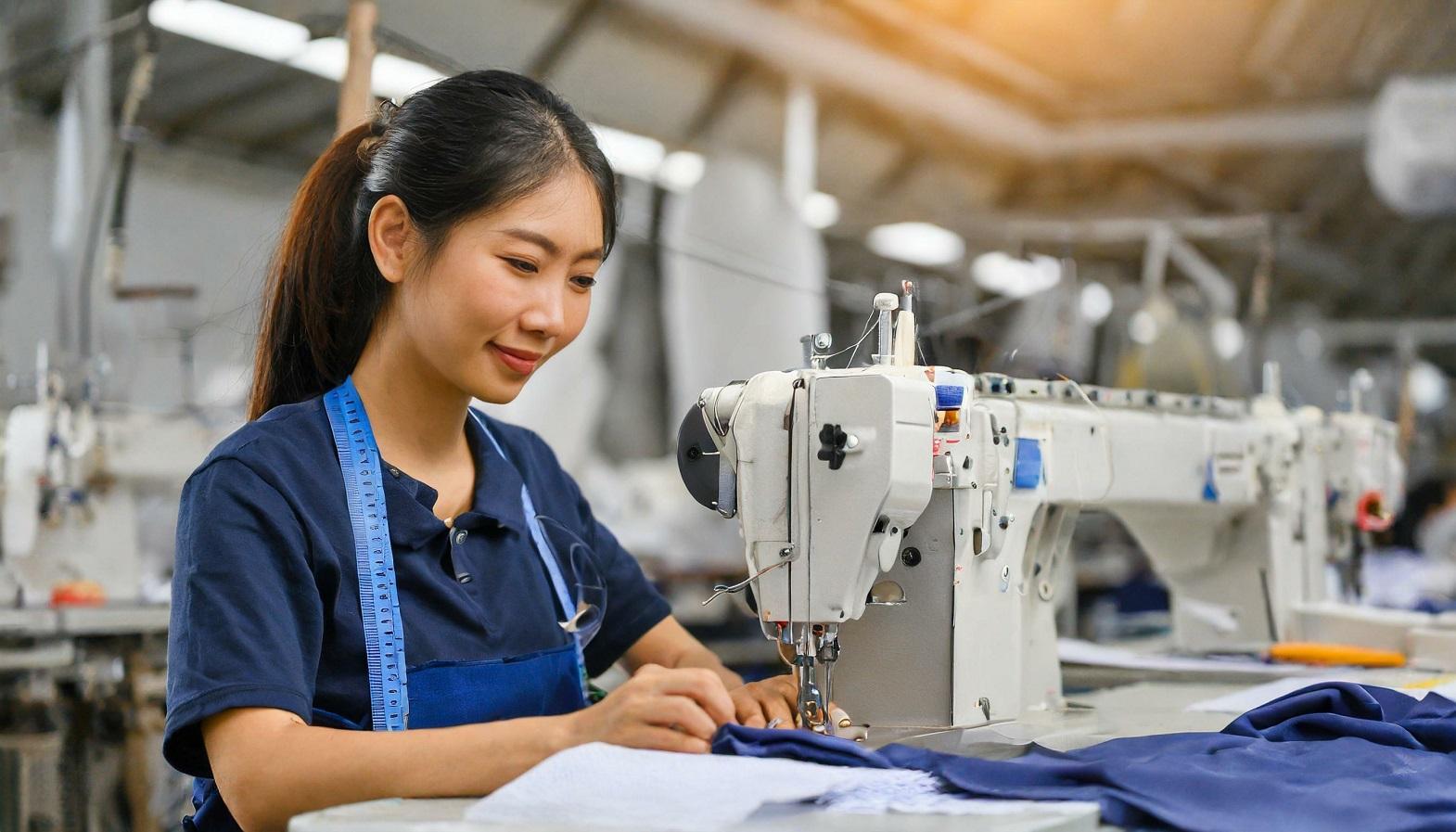Thegarment industry of North Korea is among the most successful export industries.Apparel companies belonging to Holland, China, Germany, France, and South Koreaoutsource their garment production to factories in North Korea. The medium andlarge scale garment manufacturing units today employ more than thousands ofworkers. The wages are lower than most Asian countries and there by attractingmany international companies to operate production in North Korea.
SeveralEuropean nations have been buying garments from North Korea from a very longtime. From the 1970s, when a firm in Deutschland began importing clothingarticles like T-shirts from a company, there has been no turning back eversince. The country has an estimated production capacity of around 670 millionmeters and more than fifteen thousand weaving machines. Moreover, it is alsothe place that invented the unique synthetic fibre with poly vinyl alcoholcalled Vinylon.
Thecost of labor in North Korea is extremely low and is a better alternative incomparison to China, India, and other Southeast Asian countries. Besides thelabor is also highly efficient and skilled and are trained to reach high levelsof productivity. The nation being centrally located in the North-eastern partof Asia is ideal for distributing using various channels. Garment exportenterprises in North Korea encompass a wide area of manufacturing functionslike cutting, stitching and sewing, pressing, sealing, ironing, embroidering,and crocheting. The manufacturing units use updated technologies and softwarelike CAD (Computer Aided Designing) and CAM (Computer Aided Manufacturing).
Postproduction facilities like that of packaging, transport, and washing are alsoavailable as a result of sound infrastructure and availability of skilledworkforce. The kind of garments manufactured in North Korean factories rangefrom knitwear, sportswear, formalwear, and children wear to intimates, coats,suits, and uniforms. North Korea also has scientific and technical institutionsto update and make use of the latest textile technology. Yet another benefit ofimporting clothing from North Korea is the reduction in the cost of production.The increasing labor cost in the Chinese markets have led many importers toadopt the "China plus one" strategy to balance the rising costs,wherein besides China another country supports the act of production.
Sucharrangements enable companies to manufacture certain parts of a garment inNorth Korea and the remaining parts to be made and assembled in China. This hasopened up immense possibilities for the country and helps achieve a competitiveedge over other countries in Asia. There are other ways in which North Korea isexpanding their garment manufacturing set up which is by employing the citizensdirectly for the purpose of production.
ManyNorth Koreans today work in Chinese cities around the border and in SouthKorea. There are currently hundreds of workers employed in an undergarmentsmanufacturing factory in Tumen. With such flexible labor available foremployment it is estimated that in the near future, many North Koreans will beworking in the garment factories of China. The Chinese government for the year2012 issued working visas to as many as forty thousand workers from North Koreafor working in three provinces namely Liaoning, Jilin, and Heilongjiang,situated in the North east of China. Mongolia also runs garment factories usingthe skilled North Korean laborers along with other countries like CzechRepublic and the Middle East.
The government has also set up Special Economic Zones to lure international investment in the apparel sector. Many South Korean companies set up in these zones employ workers from North Korea. The special economic zones provide an opportunity for favorable corporate taxes and in the Kaesong region specifically, the factories have better facilities than in most other countries. The estimated value of apparel production per year comes close to 20 million US dollars from the mentioned SEZ.
However, there are a few bottlenecks too that apparel retailers doing business with North Korea may encounter. Working in a country with communist regime can be challenging hence establishing contacts and partnering with a local firm, who understands the nitty gritty is a way most Western garment companies prefer. There have also been instances, despite such efforts, and due to political pitfalls and lack of transparency, many apparel retail companies have pulled out from North Korea. Apart from that, the garment industry is prone to make counterfeits of high end designer labels. The Nampo city is known for producing high quality fake clothing.
There are also issues arising due to Chinese companies subcontracting their work to North Korea for many American companies. The increasing wages in China and rising labor productivity has led companies to subcontract work to lower wages accommodating economies like North Korea and Bangladesh. The "China plus one" advantage will benefit North Korean apparel sector immensely in the months to come.
North Korea, compared to its other counterparts in the textile and apparel industry has not only cheap labor but also has skilled and efficient work force with low costs of production and good infrastructure facilities, which is endearing to many companies in the West, especially in Europe.
References:
1. Zerohedge.com
2. Gpic.nl
3. Nknews.org
4. 38north.org









Comments